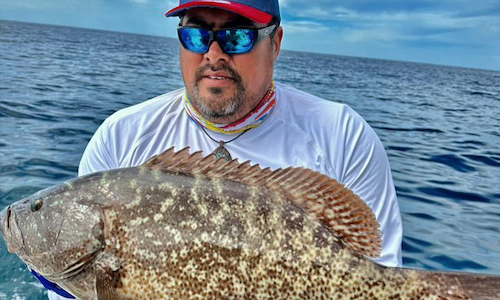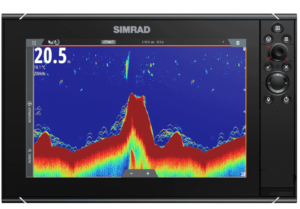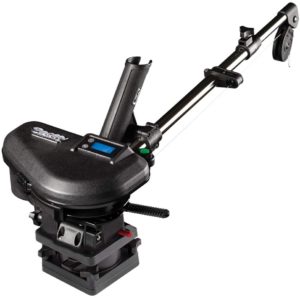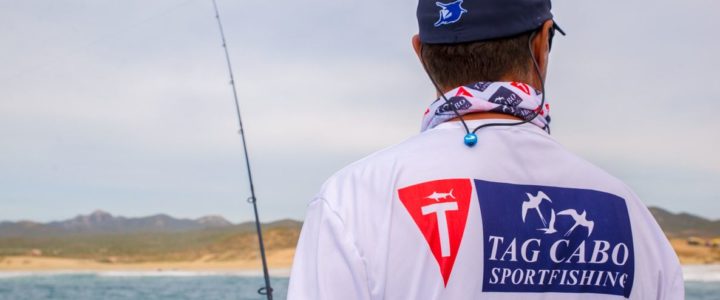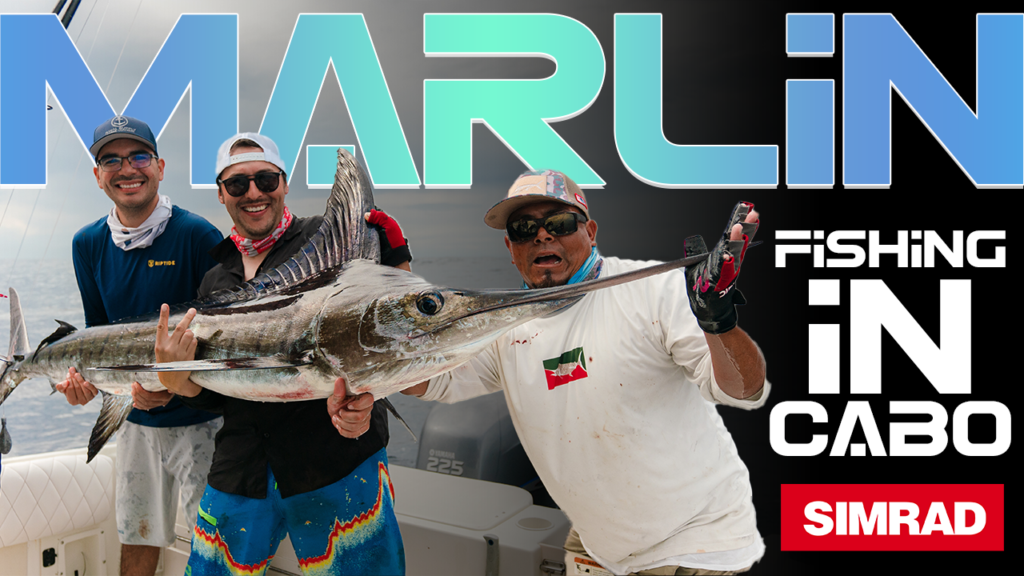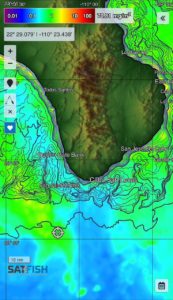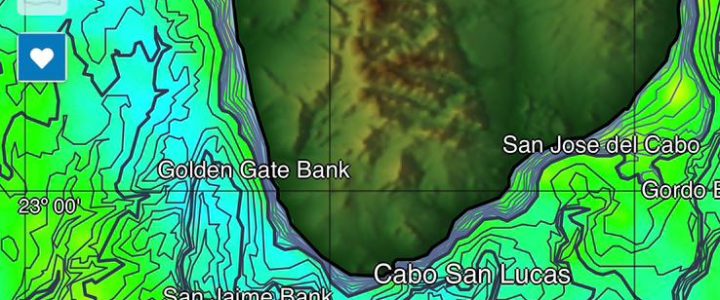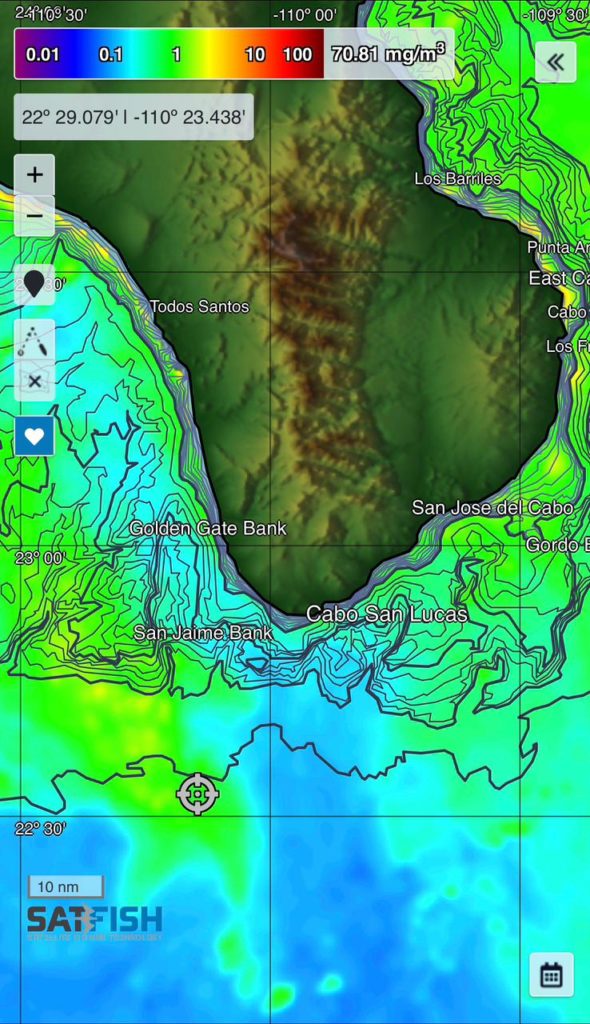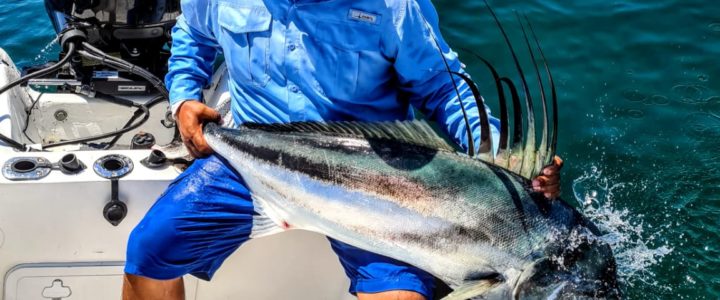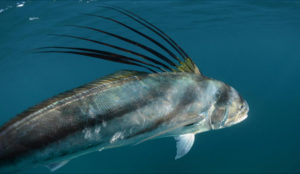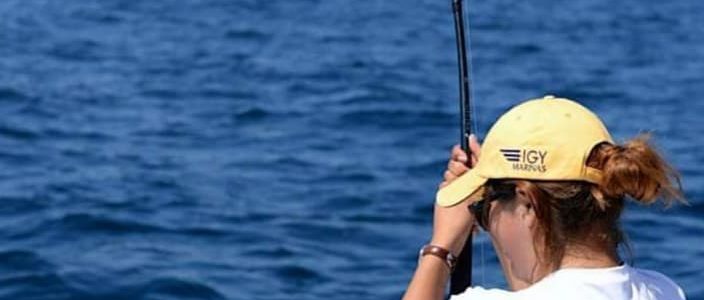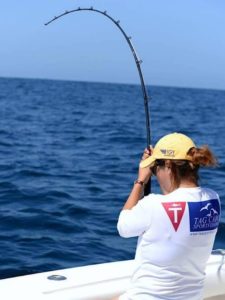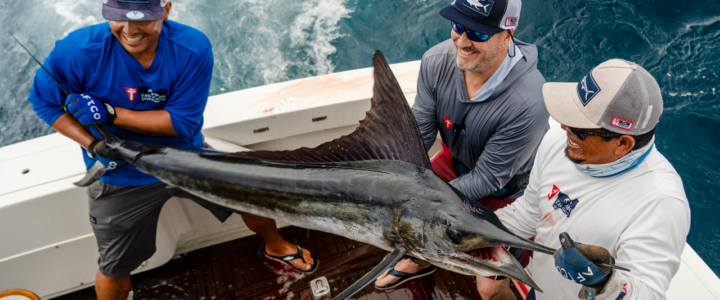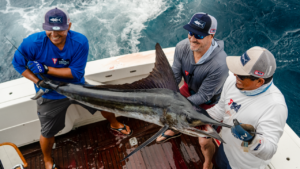Cabo San Lucas is known for its abundant marine life, including a variety of snappers and groupers that are prized by anglers. Using Scotty Downriggers and SIMRAD equipment can greatly increase your chances of landing one of these trophy fish.
A high-quality transducer is an essential piece of equipment for any angler looking to use downriggers to target fish. The transducer is responsible for sending and receiving sonar signals, which allow anglers to see the bottom of the water column as well as the location of fish.
With a properly installed and calibrated transducer, anglers can get a clear picture of the underwater environment, including the depth of the water, the presence of underwater structures or features, and the location of fish. This information can be critical when using downriggers, as it can help you identify the best depth to present your bait or lure and increase your chances of success.
One of the key factors to consider when choosing a transducer is the frequency of the sonar signal. Lower frequencies, such as 50 kHz, are best for deep water fishing and can penetrate through the water column to provide accurate readings of the bottom and any fish or structures in the area. Higher frequencies, such as 200 kHz or 455 kHz, are better suited for shallower water and can provide more detailed images of fish and other underwater features.
It’s also important to consider the type of transducer and how it will be mounted on your boat. Transducers can be mounted on the transom, through-hull, or in-hull, depending on your boat’s design and the type of transducer you choose.
When using downriggers in conjunction with a transducer, it’s important to pay attention to the readings on your fish finder or depth sounder. By identifying the depth at which fish are located, you can adjust your downrigger to present your bait at the optimal depth, increasing your chances of success.
Using the proper transducer is essential for any angler looking to use downriggers to target fish. By providing accurate sonar signals and a clear picture of the underwater environment, a high-quality transducer can help you identify the best depth to present your bait or lure and increase your chances of landing a trophy fish. So if you’re planning to use downriggers in your fishing setup, be sure to invest in a quality transducer and take advantage of the valuable information it can provide.
Scotty Downriggers allow anglers to present their baits and lures at the precise depth where these fish are known to feed. Snappers and groupers are often found near the bottom of the water column, so using a downrigger can help ensure that your bait is in the strike zone.
In addition to a downrigger, using SIMRAD equipment, such as a fish finder or depth sounder, can also help increase your chances of success. By providing real-time information on the location of fish and the depth of the water, SIMRAD equipment can help you target your fishing efforts more effectively and efficiently.
When fishing for snappers and groupers in Cabo San Lucas, it’s important to use the right bait and lures. These fish are known to be attracted to live bait such as squid, sardines, and shrimp. Using a downrigger to present live bait at the right depth can be particularly effective.
Another important consideration when fishing for snappers and groupers in Cabo San Lucas is the time of day. These fish are often more active in the early morning or late afternoon, so planning your fishing trip accordingly can increase your chances of success.
Overall, using Scotty Downriggers and SIMRAD equipment can greatly increase your chances of landing a trophy snapper or grouper in Cabo San Lucas. By targeting the right depth, using the right bait and lures, and taking advantage of advanced equipment, you can enjoy a successful and memorable fishing trip in this beautiful destination.
The best time of the year to catch groupers and snappers in Cabo San Lucas is generally from early March to June. During this time of year, the water temperature cools down, and these species move closer to shore in search of food. As a result, they become more abundant and easier to catch.
It’s important to note that the specific timing of the best fishing season for groupers and snappers can vary from year to year based on factors such as weather patterns and water temperature. However, in general, the winter months tend to be the most productive for catching these types of fish in Cabo San Lucas.
At Tag Cabo Sportfishing, our experienced guides and captains have an in-depth understanding of the seasonal patterns of different fish species in the region, including groupers and snappers. We will work with you to schedule your fishing trip at the best possible time to maximize your chances of catching these prized fish. Contact us today to learn more about our fishing packages and to schedule your trip to Cabo San Lucas.
We offer a variety of fishing packages to suit all levels of experience and preferences, including half-day, full-day, and multi-day trips. No matter which package you choose, you can rest assured that you will be provided with everything you need to catch these prized fish, including bait, tackle, and other essential equipment.
So what are you waiting for? Book your fishing trip with Tag Cabo Sportfishing today and experience the thrill of catching groupers and snappers in one of the most beautiful locations in the world. Contact us by phone at +52 624 168 9544 or by email at tagsportfishing@gmail.com to learn more about our fishing packages and to make your reservation. Don’t miss out on this incredible opportunity to catch some of the most sought-after fish in the world!
CONTACT US . tagcabosportfishing

